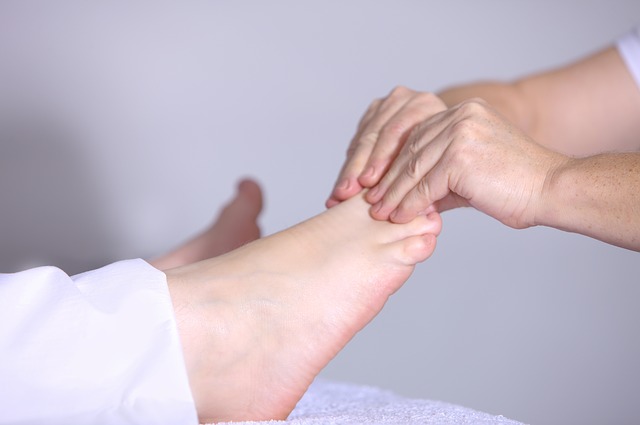Dr. Srinivas. P.T (Reg No. L-39682)
Head Of Department (Kaggadasapura branch)
Spectrum Physio Pvt Ltd
Bangalore
MYTH #1: “SHOULD CONSULT A PHYSICIAN / SURGEON BEFORE PHYSIOTHERAPY”
You really no need to consult a Physician / Surgeon before starting or to start Physiotherapy. Physiotherapists are highly qualified Health Professionals to assess and Diagnose a condition or injury and to provide treatment with evidence based. Also Physiotherapists are capable to identify and also can differentiate to provide proper referral to concern Health Professional which requires medical attention or if it’s one that requires sole physiotherapy treatment.
In 2013 a research study titled “Effectiveness of physical therapy in treating atraumatic full-thickness rotator cuff tears” concluded that Non-operative treatment using the physical therapy protocol is effective for treating atraumatic full-thickness rotator cuff muscle tears in approximately 75% of patients followed up for 2 years. (Kuhn et al. Shoulder and Elbow Surgery 2013)
An experienced Physiotherapist/Physical Therapist, an Orthopaedic Surgeon, and two Orthopaedic Residents having similarly high diagnostic skills. This also proved in 2009, and showing the Clinical Diagnostic Accuracy of 85.3% (29/34 correct) for the Physiotherapist/Physical Therapist, 84.4% (27/32 correct) for the Orthopaedic Surgeon, and 80.0% (24/30 correct) for Orthopaedic Residents in diagnosing a Acetabular Labral Tears. Results showing that a Physiotherapist/Physical Therapist is having more percentage of Diagnostic accuracy in musculoskeletal or Orthopaedic conditions. (North American Journal of Sports Physical Therapy 2009(4):1;38-45)
MYTH #2: “PHYSIOTHERAPY IS JUST MACHINES”
Physiotherapy is much more than just modalities/machines. Of course Physiotherapist use modalities to treat the pain but that is just 10% of entire treatment approach. Treating with only U.S.T (Ultra Sound Therapy) and I.F.T (Inter Ferential Therapy) is almost 20yrs back style of treatment. At present Physiotherapy has evolved a lot in terms of Research and advanced treatment which consist the approaches like Manual Therapy, soft tissue manipulation, Dry Needling Therapy, Taping, Tailored Rehabilitation, Therapeutic Exercise Prescription, Strength and Conditioning Programs and lot more with International Research Evidence support. Even, in all above approaches again ‘n’ number of subgroups are there where Mobilizations, Manipulations, Decompression Therapy, Shock Wave Therapy, Myofascial Trigger Release, Neuro Dynamics, Perturbation Training, Posture correction, Balance training, Gait training, Orthotics, Patient education, Respiratory care and many comes under.
Physiotherapy is one of the fastest growing professions in Research evidence side. It has many concrete Research Guidelines and Reviews for the above mentioned treatment approaches.
Approximately there are 4,53,409 research articles and 89,912 research articles indexed in U.S based search engine PubMed with search of Physical Therapy and Physiotherapy respectively till 03rd DEC 2018.
In Google Scholar almost 33,20,000 and 6,46,000 articles with the search of PHYSICAL THERAPY and Physiotherapy respectively by 3rd DEC 2018.
MYTH #3: “YOU NEED X-RAYS OR MRI BEFORE YOU START PHYSIOTHERAPY”
Not exactly. X-Rays and MRI always pick up your body structure, but it fails to analyze your body in functional activities where you face most of your problem. Genuine treatment never depends on your imaging studies (X-Ray or MRI) purely. Those are for correlate with your clinical presentation and functional limitations.
In 2015 a Research study has been done on Spinal area of asymptomatic people (normal people who don’t have any symptoms and complaint of pain) and in that Systemic Review Thirty-three articles reporting Magnetic Resonance imaging (MRI) findings for 3110 asymptomatic individuals. The prevalence of disc degeneration in asymptomatic individuals increased from 37% of 20-year-old individuals to 96% of 80-year-old individuals. Disc bulge prevalence increased from 30% of those 20 years of age to 84% of those 80 years of age. Disc protrusion prevalence increased from 29% of those 20 years of age to 43% of those 80 years of age. The prevalence of annular fissure increased from 19% of those 20 years of age to 29% of those 80 years of age. (American Journal of Neuroradiology 2015; 36(4): 811–816)
So, they concluded that many imaging-based degenerative features are likely part of normal ageing and unassociated with pain. These imaging findings must be interpreted in the context of the patient’s clinical condition. Which is giving clear information that we should treat the patient problem, not just MRI findings. That’s what a Physiotherapist does exactly.
MYTH #4: PHYSIOTHERAPY IS ONLY FOR I.T Professionals
Physiotherapy treats all types of pain and Movement dysfunctions or discomfort in wide spectrum range, not just for I.T Professionals. Common issues from back pain to joint integrity and muscle performance of an athlete can be addressed through Physiotherapy. Any profession having high level repeated movements and any professional having imbalance in their body muscles because of pain or discomfort can be treated through Physiotherapy.
In fact, in Physiotherapy profession itself we have several specializations where a respective specialized physiotherapist can handle a respective patient ineffective way.
Below are specializations in the field of Physiotherapy:
- Orthopaedic or Musculoskeletal Physiotherapy.
- Sports Physiotherapy.
- Neurological Physiotherapy.
- Paediatric Physiotherapy.
- Cardio vascular-Pulmonary Physiotherapy.
- Physiotherapy in Oncology.
- Physiotherapy in Gynecology and Obstetrics (Women’s Health).
- Geriatric Physiotherapy.




